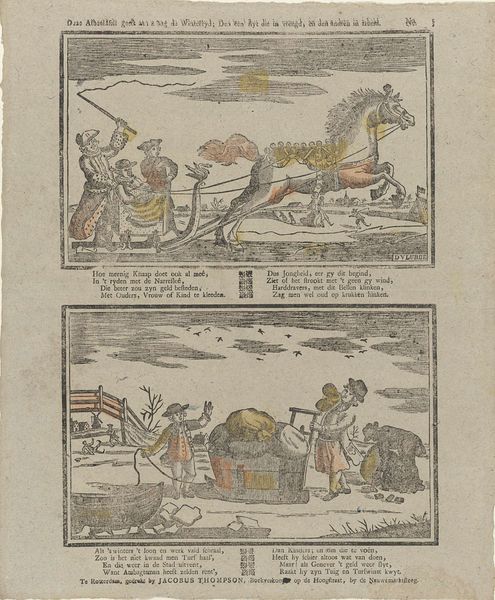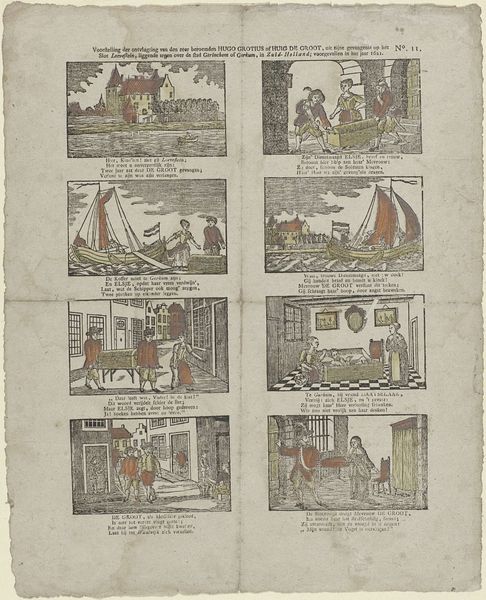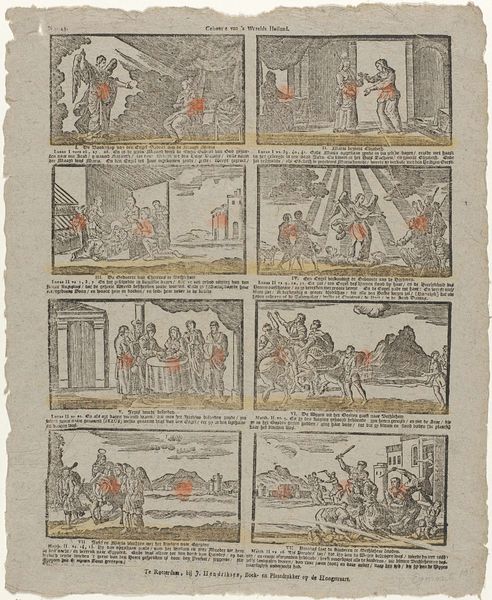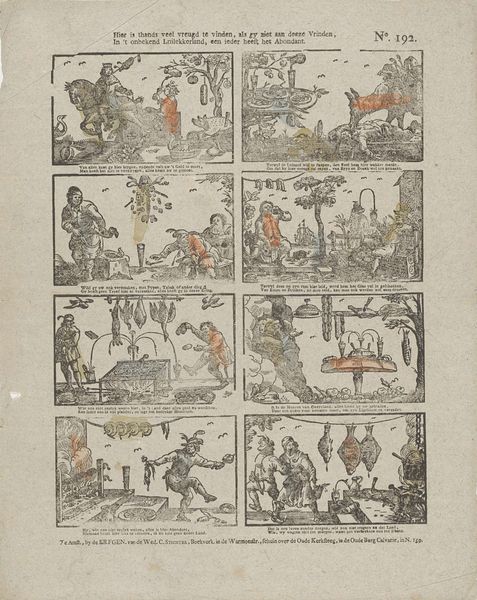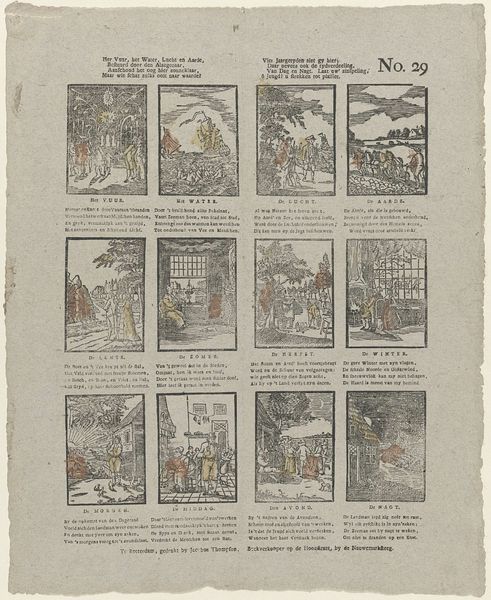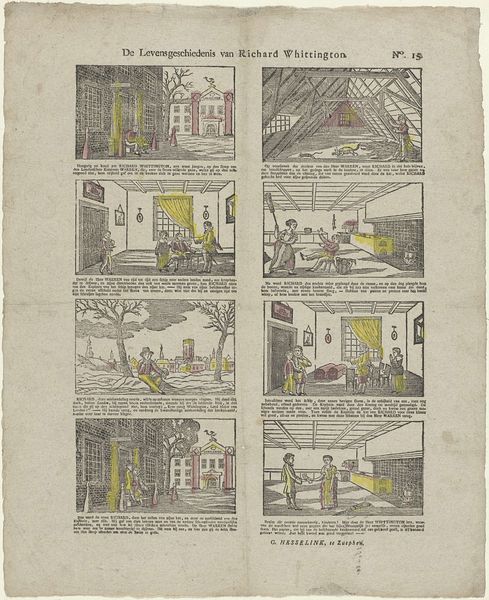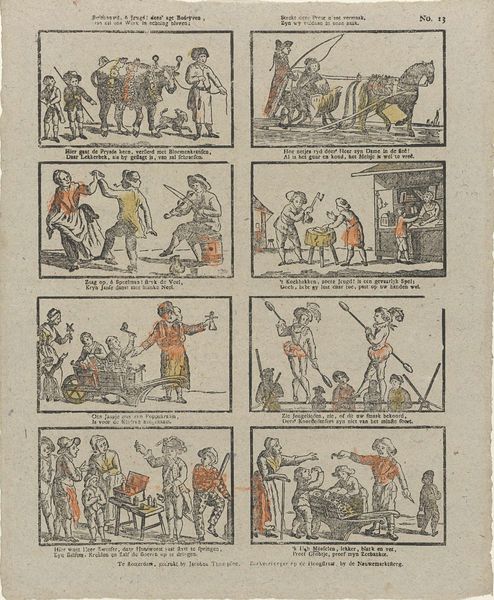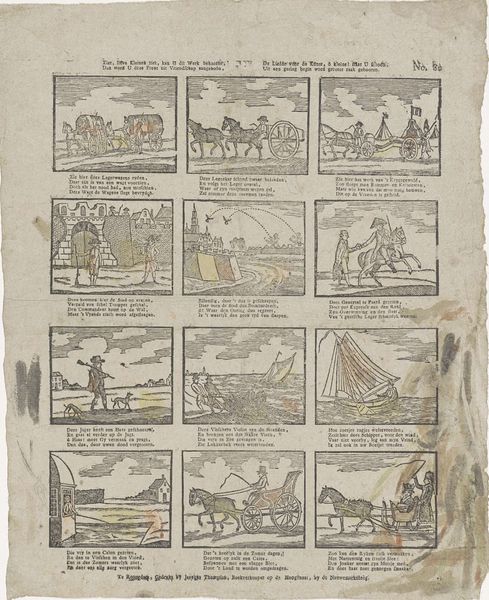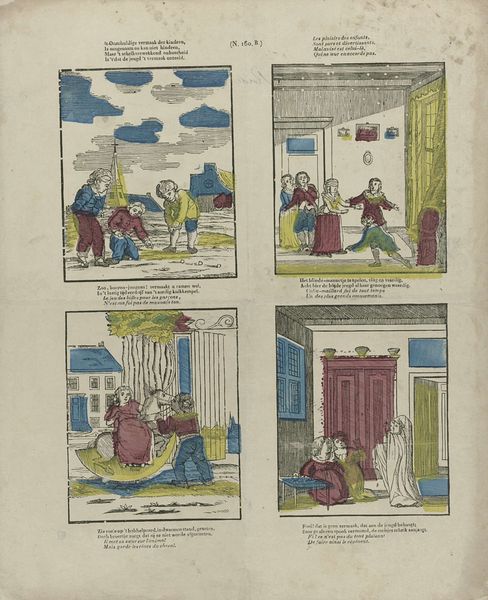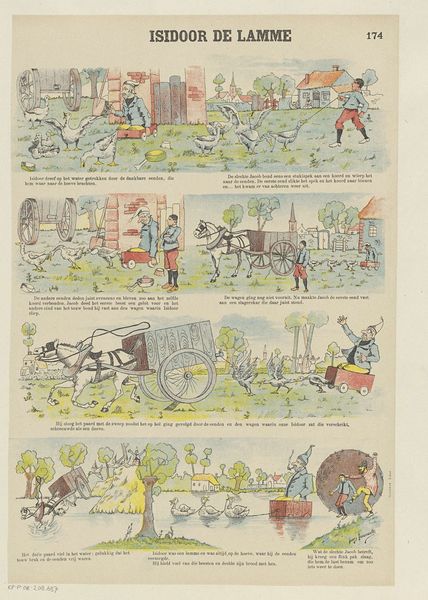
Afbeelding van de geduchte storm en watervloed in Gelderland, Overussel, enz., de doorbraak / der Dyken, en de overstrooming in de huizen, geschied in 't begin van 't jaar 1809 after 1819
0:00
0:00
Dimensions: height 416 mm, width 330 mm
Copyright: Rijks Museum: Open Domain
Editor: This print, created by Johannes Donker after 1819, is titled "Image of the dreaded storm and flood in Gelderland, Overussel, etc., the breakthrough of the Dikes, and the flooding in the houses, occurred in the beginning of the year 1809." The whole image feels…chaotic and overwhelming. I’m immediately struck by how the artist depicted both the exterior and interior destruction caused by the flood. What symbolic weight do you think the artist is trying to convey? Curator: This print functions as more than a historical record; it's an attempt to grapple with trauma and collective memory. Notice the clear division between the two scenes: the upper showing the external devastation, people struggling against the natural forces, and the lower revealing intimate scenes of domestic life disrupted. The outside world of natural disaster and the intimate interior collapse, a powerful representation of the emotional upheaval people were facing. Editor: It's interesting how you see it as representing both public and private disruption. The symbols seem less straightforward. How might the symbolism and imagery influence emotional impact on its original audience? Curator: Look closely at the people’s faces. Their expressions aren’t individual; rather they serve as shorthand, communicating helplessness and supplication, reinforcing shared suffering. Then, consider the contrast between the destructive waters and the orderly, almost rigid interior in the lower half before the flood enters. That domestic space held expectations, a world shattered along with the dikes. Donker emphasizes what was lost—not only property, but a sense of order and safety. Does that reading change your initial response? Editor: Absolutely. Seeing the "shorthand" emotional representations and the symbolism of shattered expectations helps me realize that it reflects a deeper cultural anxiety beyond just a news story. Curator: Exactly. And by placing the viewer as an outside observer peering into these vulnerable moments, Donker implicates us in that shared historical experience, prompting contemplation about nature's power and humanity's fragility.
Comments
No comments
Be the first to comment and join the conversation on the ultimate creative platform.
